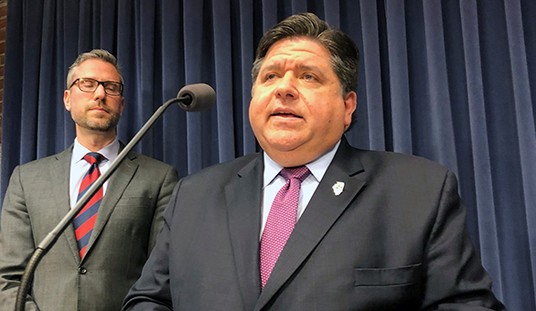In 2007, in a crowded suburb of Damascus, Iraq war refugee Joseph Zaiad told me why attempting to leave Syria and sneak into Mexico for an illegal border crossing into the U.S. wasn’t an option. Zaiad had contemplated doing so at one point, because, like thousands of other Iraqi war refugees, he found himself unable to return home or find a way to legally enter a third friendly country that might offer a better future. “We all know the border between Mexico and the U.S. is closed,” he said. “Before the crackdown, you used to be able to go. But now? It is impossible.”
Not exactly. But President Barack Obama might want to consider the deterrent effect of border security measures his predecessor and Congress put in place on the Mexican frontier following 9/11. As he prepares to turn his attention to immigration reform, the new president is under mounting pressure from elements of his party to tear down the wall, slow the mass deportations, stop illegal-entry prosecutions and workplace raids, and never let the National Guard leave its barracks again.
Lost in the distracting debates about Mexican illegals is the fact that thousands of immigrants from the Muslim world and state sponsors of terrorism can, do, and always have found it easy to steal across the Mexican border. In intelligence parlance, these immigrants have come to be known as “special interest aliens” because they come from Muslim countries that are flagged for hosting known terrorist organizations. The Obama administration and immigrant advocacy groups pressuring for a rollback of the Bush-era crackdown policy need only read current Department of Homeland Security (DHS) “threat assessments” to be reminded that border security was never squarely about Mexicans and Central Americans. It was always about “special interest aliens.”
The 2008-2013 threat assessment put out by the Office of Intelligence and Analysis of the Department of Homeland Security enunciates what it still considers to be the central threat for the next half decade: “At the highest level of concern, terrorists will attempt to defeat border security measures with the goal of inserting operatives and establishing support networks in the United States.” It goes on to state: “These illicit actors also could pose as refugees or asylum seekers to gain access to the United States. State failure and internal conflicts abroad will continue to generate sizable refugee flows to the United States — notably from countries of special interest for terrorism in the Middle East, Africa, and South Asia — which could provide opportunities for illicit entry.”
Obama will no doubt soon learn from access to classified intelligence — off limits to immigrant advocates — that this is hardly unsubstantiated fear-mongering.
As I documented at length in the 2007 four-part series “Breaching America,” illegals from up to 43 “countries of interest” are getting caught crossing the Mexican border all the time. They come from nations where U.S. military personnel are battling radical Islamist movements, such as Iraq, Afghanistan, Somalia, and the Philippines. They come from countries where organized Islamic extremists have bombed U.S. interests such as Kenya, Tanzania, and Lebanon. They come from U.S.-designated state sponsors of terror such as Iran, Syria and Sudan. And they come from Saudi Arabia, the nation that spawned most of the 9/11 hijackers.
Aided by human smuggling organizations, many of these Muslim immigrants zigzag wildly across the globe on their way to Latin American countries. Then, they typically move northward to Mexico and into America. Their disparate routes are determined by where they can get bogus travel documents and the presence of lax customs-enforcement practices.
Latin American consulates based in the Middle East are selling tourist visas for bribes or simply issuing them to local travelers without regard to U.S. security concerns. Guatemala is a key stepping stone country through which large numbers of special interest immigrants travel northward and it issues visas with little screening from its consulates in places like Jordan and Egypt. Mexican workers at consulates from Beirut to Belize to Mumbai have been implicated in bribery schemes in which they have sold travel visas to Afghanis, Lebanese, and North Africans.
In 2007, I found that the the U.S. border patrol caught 5,700 of these immigrants crossing since the 9-11 terrorist attacks. Up to an estimated 60,000 more had evaded capture and any sort of screening through terror watch list databases. The Customs and Border Protection service reported finding another 30,000 immigrants from just the four state sponsors of terror in the Middle East between 2001 and 2005 — Syria, Iran, Sudan, and Libya. Granted, that’s a small number when compared with the hundreds of thousands of Latin Americans caught each year. And it’s also true that certain right-wing politicians and pundits have made too much of special interest traffic. The middle truth is that terror watch list screening and investigation determined that most of the captured illegal entrants were coming with no known terrorism intent.
But only the naïve or willfully obtuse would dismiss the logic that if good guys can make it all the way from the Middle East or North Africa then so too could bad guys. In fact, a number of bad guys have come into the U.S. by way of illegal border crossings. Among them was an al-Qaeda operative who was 27th on the FBI’s Most Wanted list, as well as a number of Hezbollah, Hamas, and Tamil Tigers operatives. Government sources say there have been plenty of “hits” on U.S.-bound Muslim travelers caught in Mexico and along the U.S. side of the border. But the American public will not know about these until future historians sue to declassify reports. As Janice Kephart, who served as legal counsel for the 9/11 Commission, told me: “They are not all economic migrants. I do get frustrated when people who live in Washington or Illinois say we don’t have any evidence that terrorists are coming across. But there is evidence.”
The latest border patrol capture figures for special interest aliens show that this traffic has continued unabated through 2007 and 2008, with another 700 being caught at the Mexican border through the end of 2008, and untold numbers more not caught. The majority were caught crossing into Texas, the most populous among them Pakistanis, Somalians, Eritreans, and Filipinos.
Border protection authorities reported significant increases in encounters with Iraqis and Somalians last year, in line with the DHS assessment’s prediction that troubled terrorism habitats far away will send refugees toward Mexico’s border with the U.S. In 2007, Customs and Border Protection apprehended 392 Iraqis illegally trying to sneak in through regular ports of entry with bogus passports received from European-based smugglers. In 2008, 114 Somalians were detained at border crossings compared with 43 the year before. These figures don’t include the hundreds caught trying to cross between points of entry, by swimming the Rio Grande or hiking over land frontiers. Most of the hundreds of Iraqis and Somalians taken into custody were documented only because they turned themselves in and claimed political asylum. But many others were caught trying to sneak in with no intention of doing so.
The glaring question is: Who are all these people who never get caught or turn themselves in and mix into the American population with no background investigation? The number of Iraqis sneaking over the Mexican border is only expected to increase in the next few years, according to the report, and that “ease of access to human smuggling and fraudulent document networks likely would underpin such an increase.”
The report goes on to predict an increase of illegals — due to instability in their countries — from Afghanistan, Bangladesh, and Pakistan, “providing extremists or other illicit actors new opportunities to mask their movements from South Asia. In 2007, individuals with Pakistani citizenship represented the third-largest number of positive Terrorist Identities Datamart Environment match encounters.”
All told, it would be interesting to learn whether the deterrent projected in far-flung lands like Syria and Guatemala will diminish if the Obama administration acts on the most radical of the rollback demands from advocates for Mexican immigrants. There is plenty of statistical and anecdotal evidence to suggest border security efforts have had a far reaching impact. Of a dozen Central Americans in Guatemala who were on their way to America, every one of them had been caught and thrown out five, six, and even seven times — an unprecedented experience. Most were giving up until the so-called “Bush crackdown,” as the migrants called it, was called off. The 2008-2013 threat assessment picked up as much.
“Crossing the border from Mexico illegally along the U.S. Southwest corridor,” the report states, “has become more challenging because of an array of new U.S. security enhancements, such as those implemented under the Secure Border Initiative. Increased border security and law enforcement on the U.S. side have placed further pressures on … alien smugglers.” Al-Qaeda, while still interested in penetrating the Mexican and Canadian borders, “probably retains a preference for legal entry, thus maximizing freedom of movement once inside the country,” the report says.
It may be tempting for President Obama to serve up change to his minions of well-meaning human rights advocates, who are no doubt genuinely concerned about the treatment of job-hunting Mexican migrants. But failure to acknowledge the other people coming in with them carries its own political risk, especially if blame for the loss of American lives is a result.









Join the conversation as a VIP Member